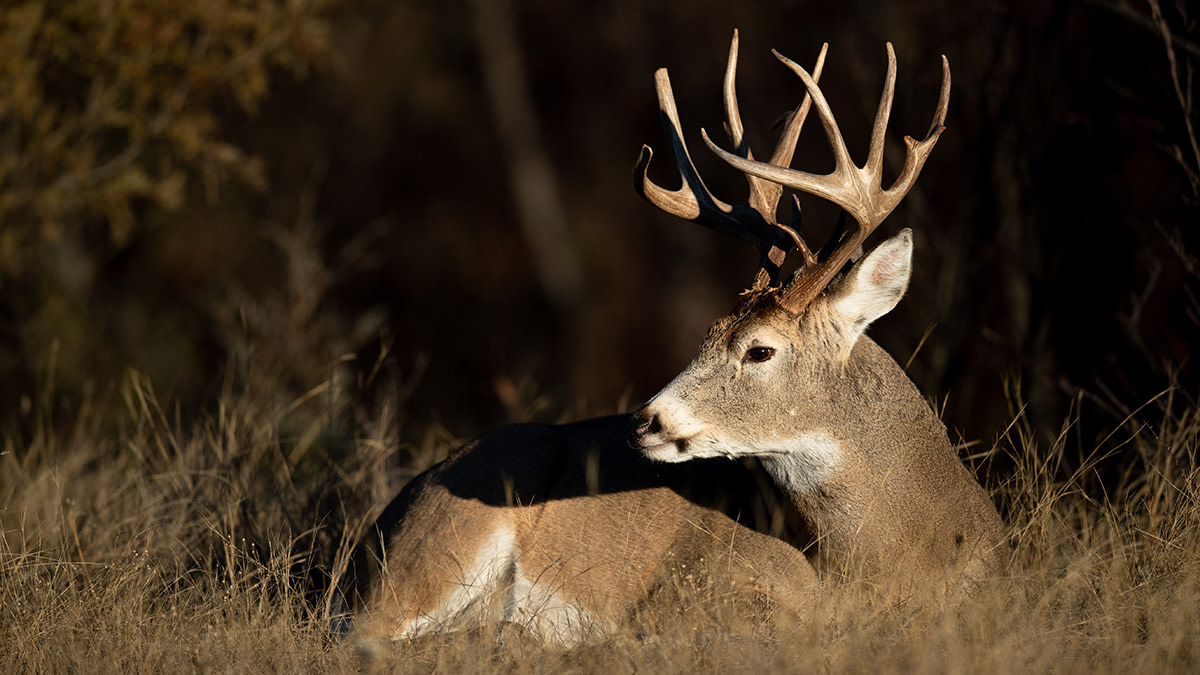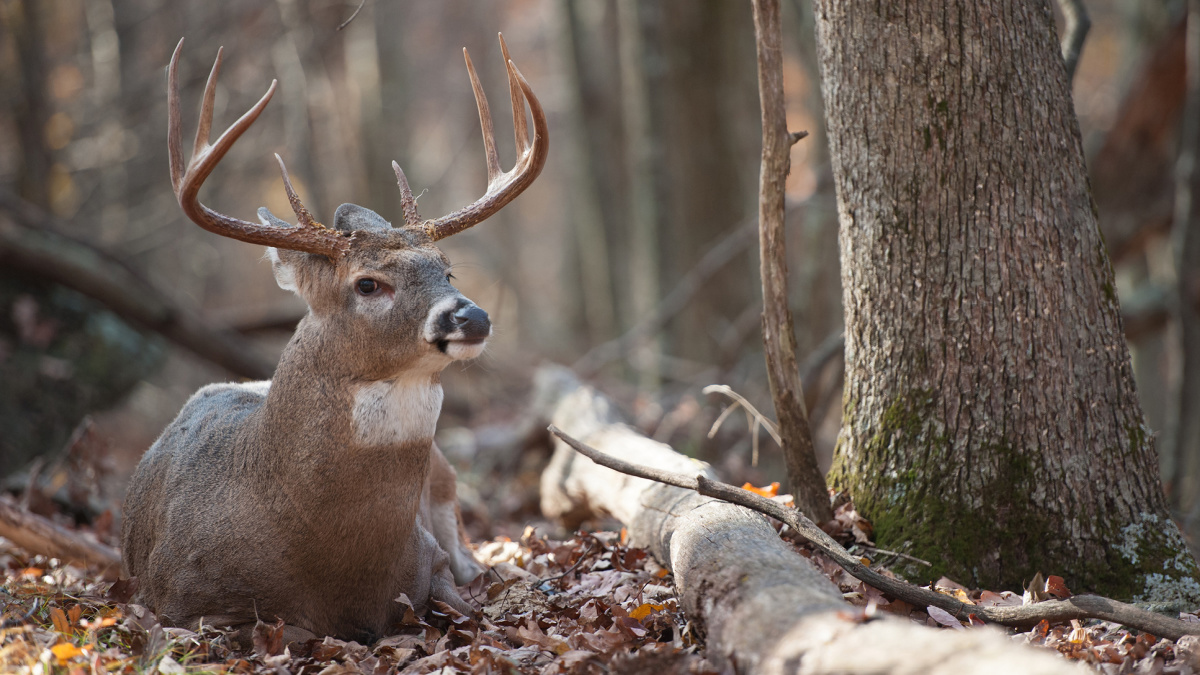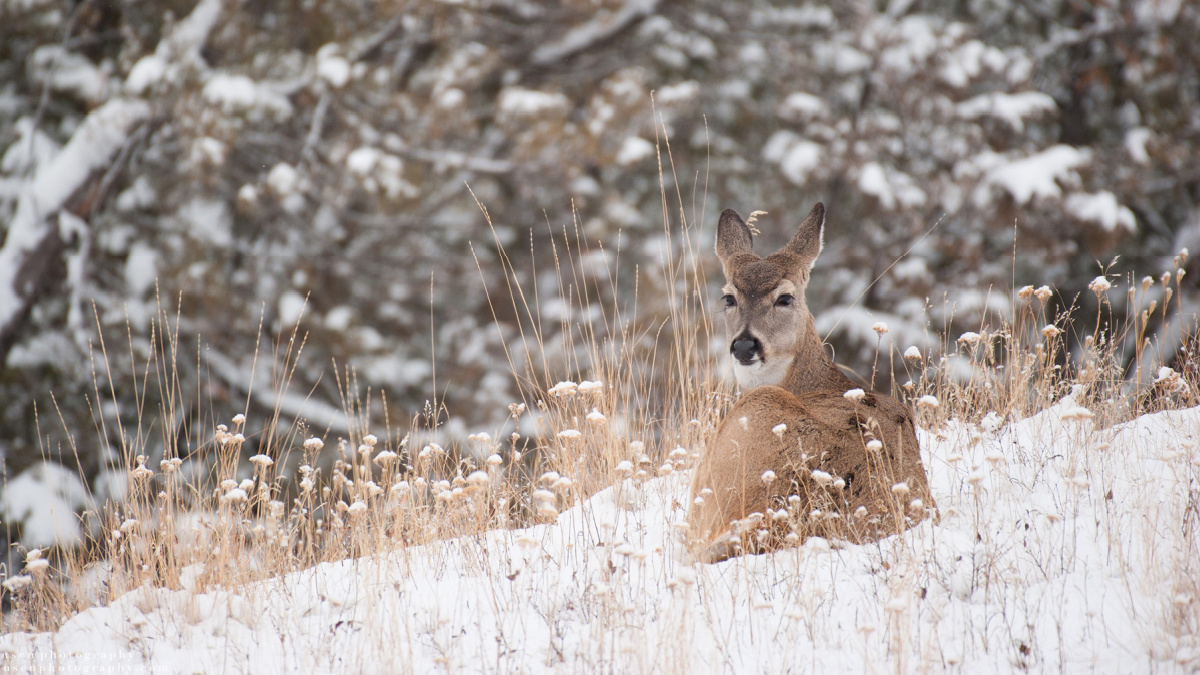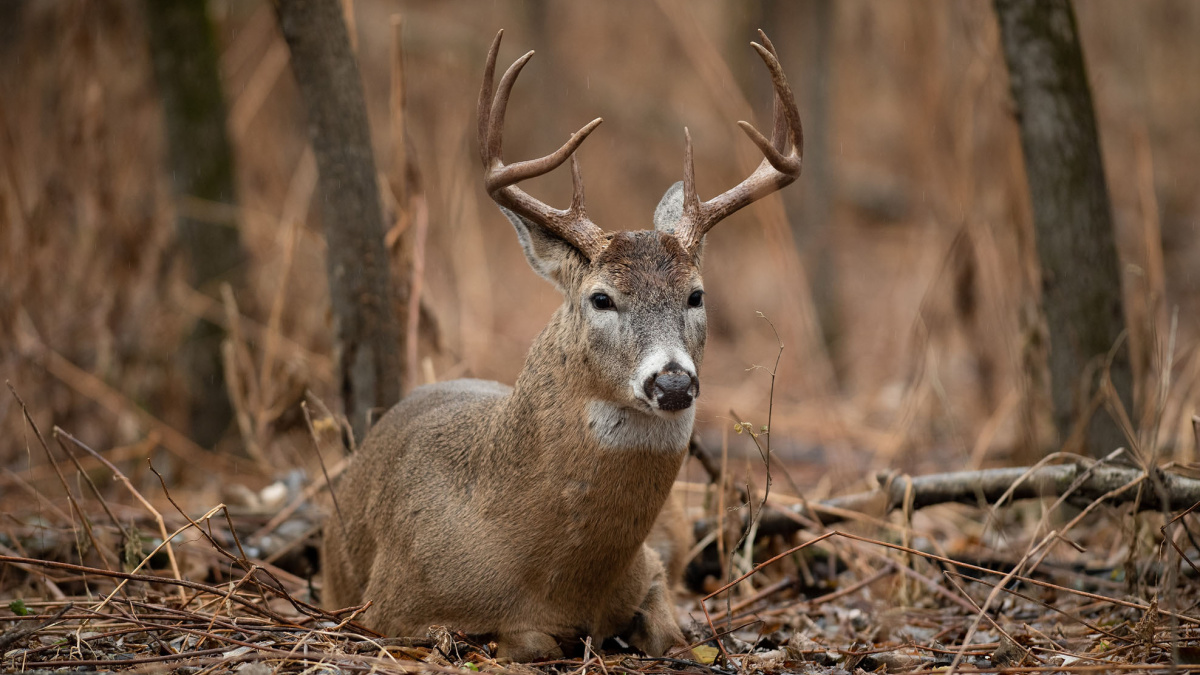
Deer spend most daylight hours lying in their bed, so it’s no wonder why so many hunters talk about whitetail bedding, specifically buck bedding. It’s a deer’s home, essentially—the place they’re most secure and protected. Because of this, they’re often located in areas that humans aren’t likely to be, near sources of food and water, and located in places where they have sensory advantages over predators. Think about swampy wetlands, difficult-to-navigate thickets, or off-the-beaten-path ridges.
After figuring out where the beds are, your next step is to figure out why and how they are using these areas. After putting some of these pieces together, you can make reasonable assumptions about your next steps in forming a hunting plan.
Deer Sleep Cycles According to the National Deer Association, a typical deer sleep cycle is about 30 minutes. During this time, the deer will snooze anywhere from 30 seconds to a few minutes then become alert for a few minutes. The deer bounces between awake and asleep for the duration of the cycle until it decides to get up and grab a bite to eat, stretch, or get out of harm's way, until they lay back down again.
This active sleep pattern reflects the natural instinct of prey to flee rather than fight. Deer always maintain some level of alertness, like never lowering their ears in order to ensure early detection of predators. Because of this well-adapted sleep method, it's highly unlikely to stumble upon a sleeping deer. Their need to maintain sensory awareness also mirrors the locations where deer choose to bed.

Where Do Bucks and Does Sleep? First and foremost, it’s essential to understand the difference between doe and buck beds. When you come across a bed, examine it to look for a few characteristics that help tell whether it’s a buck or a doe bed.
Bucks bed with much more intention than does, especially when it comes to their sense of smell, vision, and hearing. They are larger and often have rubs on their entry and exit trails. Buck beds typically have tremendous visual advantages with at least 30 to 50 yards of visibility. Additionally, they like to have the wind advantage to their back to protect them on their weak side where they aren’t looking. In hill country, they’ll take advantage of the upward thermals during the day to have seemingly all angles covered with their sense of smell. Lastly, they like to have an auditory advantage, so they often have thick cover on their back to hear danger coming long before it gets to them. Not all buck beds will have each of these three senses covered, but rarely do I find them with less than two of those senses to their advantage.
Does tend to bed in groups, so each doe doesn’t need to have all of these senses covered because the other ones have their backs while laying in a circular shape. They like to be closer to, if not within, the feeding area. I’ve come across numerous doe bedding areas on the edge of an apple orchard or a newer logging cut that offers excellent food options.

Where Do Deer Sleep Based on Time of Year? Whitetails rarely bed in the same exact location throughout the year. When you look at a bed, ask yourself why they are bedding there. Is it for cover? Food? These two essentials, combined with impending human pressure, tend to dictate why a deer uses a specific bed.
In the summer, when foliage is thick everywhere, deer have many bedding options and like to be as close to food and water as possible. Remember that browsing options are highest during the summer, so their food source may not always be a big agricultural field. As the leaves start dropping in the fall, deer bedding will shift to the areas with more cover while still being a reasonable distance away from the primary food source. This is where thicker areas play more of a role. When the leaves have all dropped, bedding is the most concentrated in the last areas of security cover. Conifer trees that create thermal cover, mountain laurel, and beech thickets close to food come to mind during the winter.
Pressure from predators (including hunters) impacts bedding no matter what time of the year it is. So what does all of this mean? When you find a bed, play out these scenarios in your head to try and connect the dots as to when and why they would be using it.

Specific Deer Beds vs. Deer Bedding Areas Finding a worn-down buck bed is a phenomenal feeling when there are beat-down trails with big rubs leading in and out of it, and all of the stars align. Unfortunately, that isn’t always the case. I find more buck beds that are just slightly worn down but find multiple ones around the edge of a thicket. This is often due to their need for their senses to be covered no matter what the weather is doing.
If a bed is centered around a westerly wind, and that’s the predominant wind direction for that area, it will likely be used more than a bed set up for an easterly wind. In addition, I’ve found bucks to bed in thick cover when they can’t find a good bedding location based on the wind. All this to say that walking the entire area will help you put the pieces of the puzzle together and decide whether you should be hunting a specific bed or the bedding area.
Whitetail bedding is not impossible to figure out, but you need to let them teach you by asking questions surrounding each bed you find.
All images via Matt Hansen.





